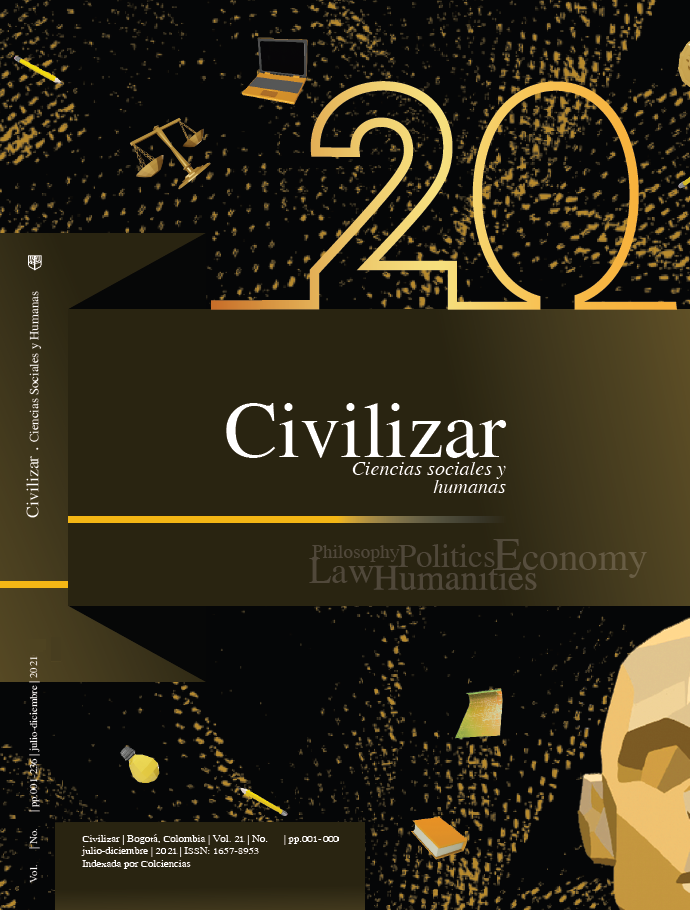Resumen
Esta investigación tuvo por objetivo indagar sobre el uso del portafolio como instrumento de evaluación de desempeño en una institución educativa ecuatoriana que trabaja bajo el modelo educativo basado en destrezas. Se tomó como marco de referencia lo indicado por el Ministerio de Educación para el curso de Matemáticas en el primer año de educación media superior. También se diseñó la investigación bajo la metodología del estudio de caso, integrando el enfoque mixto, y se recogieron datos cuantitativos y cualitativos para comprender mejor el fenómeno. En el estudio participaron 22 estudiantes. Con el fin de estimar la utilidad del portafolio como herramienta de evaluación de desempeño, se diseñó una rúbrica, basada en una taxonomía de aprendizaje orientada a clasificar procesos de pensamiento, y un cuestionario. Más tarde, se analizaron las evidencias contenidas en los portafolios de tres estudiantes y se compararon los resultados de evaluación. Además, se integró al análisis la percepción de estudiantes del mismo grado y grupo académico con respecto al uso de portafolios. Los resultados permiten inferir la utilidad del portafolio como instrumento de evaluación, dado que, aparentemente, favorece el proceso de aprendizaje y el desarrollo de destrezas. Por último, se integran sugerencias sobre posibles estudios futuros en cuanto al diseño y la aplicación del portafolio en el aula.
Referencias
Alcaraz, N. (2015). La evaluación en el aula: explorando el portafolios en secundaria. Un estudio de caso [te¬sis de doctorado, Universidad de Málaga]. http://hdl.handle.net/10630/9837
Barberá, E. (2005). La evaluación de competencias com¬plejas: la práctica del portafolio. Educere, 9(31), 497- 504. http://www.redalyc.org/pdf/356/35603110.pdf
Baxter, P. y Jack, S. (2008). Qualitative Case Study Me¬thodology: Study Design and Implementation for Novice Researchers. The Qualitative Report Volu¬me, 13(4), 544-559. https://doi.org/10.46743/2160-3715/2008.1573
Beckers, J., Dolmans, D. y Van Merriënboer, J. (2016). E-portfolios Enhancing Students’ Self-Directed Learning: A Systematic Review of Influencing Fac¬tors. Australasian Journal of Educational Techno¬logy, 32(2). https://doi.org/10.14742/ajet.2528
Cáceres, M. (2010). Las reflexiones que los maestros en formación incluyen en su portafolios sobre su aprendizaje didáctico matemático en el aula universitaria [tesis de doctorado, Universidad de Salamanca]. https://doi.org/10.14201/gredos.76373
Cárdenas, G. M. y Vega, M. (2019). El portafolio como estrategia de autorregulación en el desarrollo de competencias profesionales de los estudiantes. In Vestigium Ire, 10(1), 21-37. https://doi.org/10.15658/INVESTIGIUMIRE.191001.03
Cleveland, R. E. (2018). Using Digital Portfolios: Reflection, Assessment & Employment. TechTrends, 62(3), 276-285. https://doi.org/10.1007/s11528-018-0262-0
Dayal, H. C. y Cowie, B. (2019). Professional Learning Intervention in Mathematics: A Case of Developing Portfolio Assessment. Australian Journal of Teacher Education, 44(2), 99-118. http://doi.org/10.14221/ajte.2018v44n2.7
Efklides, A. (2011). Interactions of Metacognition with Motivation and Affect in Self-Regulated Learning: The MASRL Model. Educational Psychologist, 46(1), 6-25. https://doi.org/10.1080/00461520.2011.538645
Gallardo, K. (2020). Competency-Based Assessment and the Use of Performance-Based Evaluation Rubrics in Higher Education: Challenges towards the Next Decade. Problems of Education in the 21st Century, 78(1), 61-79. https://doi.org/10.33225/pec/20.78.61
García-Carpintero., E. (2017). El portafolio como metodología de enseñanza-aprendizaje y evaluación en el practicum: percepciones de los estudiantes. REDU: Revista de Docencia Universitaria, 15(1), 241-257. https://doi.org/10.4995/redu.2017.6043
Hindriana, A. F. y Setiawati, I. (2018). The Development of Authentic Assessment Rubric for Assessing Undergraduate Students’ Learning and Performance. Indonesian Journal of Learning and Instruction, 1(1), 21-28. https://doi.org/10.25134/ijli.v1i1.1279
Jin, S. H., Song, K. Il, Shin, D. H. y Shin, S. (2015). A Performance-Based Evaluation Rubric for Assessing and Enhancing Engineering Design Skills in Introductory Engineering Design Courses. The International Journal of Engineering Education, 31(4), 1007-1020. https://www.researchgate.net/publication/282929432_A_Performance-Based_Evaluation_Rubric_for_Assessing_and_Enhancing_Engineering_Design_Skills_in_Introductory_Engineering_Design_Courses
Mellado, M. (2013). Desarrollo y evaluación de competencias en la formación del profesorado utilizando e-portafolio y rúbrica [tesis de doctorado, Universidad de Extremadura]. Dehesa. http://dehesa.unex.es/bitstream/handle/10662/896/TDUEX_2013_Mellado_Hernandez.pdf?sequence=1&isAllowed=y
Mhlauli, M. y Kgosidialwa, K. (2016). The Use of a Portfolio to Enhance Authentic Assessment Among In-service Student-Teachers’ in Social Studies Education at the University of Botswana. Journal of Education and Human Development, 5(3), 84- 96. https://doi.org/10.15640/jehd.v5n3a10
Ministerio de Educación del Ecuador. (2016). Educación General Básica Elemental. https://educacion.gob.ec/wp-content/uploads/downloads/2016/03/ELEMENTAL1.pdf
Moreno Olivos, T. (2016). Evaluación del aprendizaje y para el aprendizaje: reinventar la evaluación en el aula. Universidad Autónoma Metropolitana.
Muñoz González, L. de la C., Serván Núñez, M. J. y Soto Gómez, E. (2019). Las competencias docentes y el portafolio digital: crear espacios de aprendizaje y evaluación en la formación inicial del profesorado. Un estudio de casos. Revista Iberoamericana de Evaluación Educativa, 12(2), 111-131. https://doi.org/10.15366/riee2019.12.2.006
Padua, M. (2019). Estrategias metacognitivas y rendimiento alcanzado en estudiantes de matemáticas en la Universidad Central del Este. UCE Ciencia. Revista de postgrado, 7(1). http://uceciencia.edu.do/index.php/OJS/article/view/153/146
Pérez, M. M. (2014). Evaluación de competencias mediante portafolios. Perspectiva Educacional. Formación de Profesores, 53(1), 19-35. https://doi.org/10.4151/07189729vol.53-iss.1-art.213
Shaidullina, A. R., Fassakhova, G. R., Valeyeva, G. K., Khasanova, G. B., Komelina, V. A. y Ivanova, T. L. (2015). A Comparative Research on Levels of Students’ Formation Skills of Their Career Advancement Portfolio in Secondary and Higher Education Systems. Asian Social Science, 11(1), 375- 379. https://doi.org/10.5539/ass.v11n1p375
Sigal, C. (2007). El portafolio, instrumento de evaluación para promover la reflexión. En E. Pagani (ed.), Experiencias y propuestas en la construcción del estilo pedagógico en diseño y comunicación (pp. 303-305). Universidad de Palermo. http://fido.palermo.edu/servicios_dyc/publicacionesdc/archivos/10_libro.pdf
Smit, R., Bachmann, P., Blum, V., Birri, T. y Hess, K. (2017). Effects of a Rubric for Mathematical Reasoning on Teaching and Learning in Primary School. Instructional Science, 45(5), 603-622. https://doi.org/10.1007/s11251-017-9416-2

Esta obra está bajo una licencia internacional Creative Commons Atribución-NoComercial-SinDerivadas 4.0.
Derechos de autor 2021 Civilizar: Ciencias Sociales y Humanas


